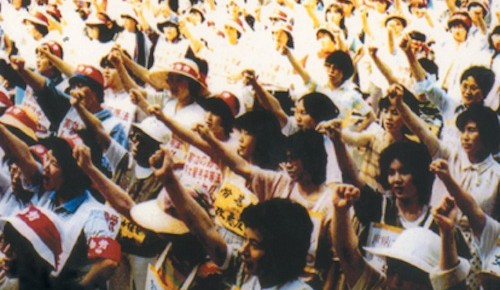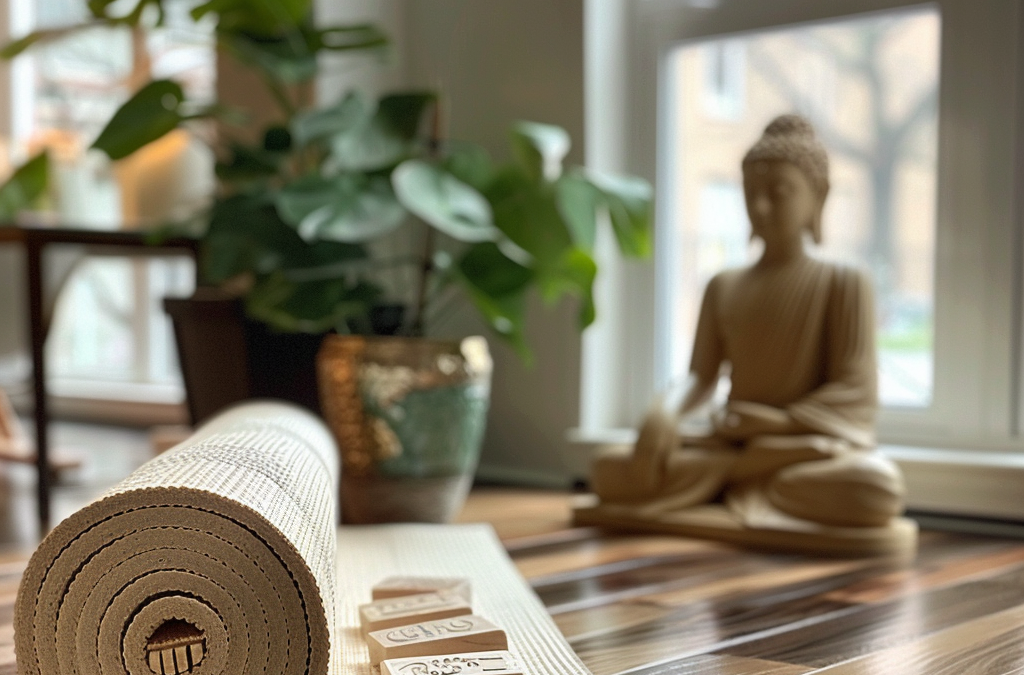The “Portraits of Feminism in Japan” exhibit at the University of Michigan’s Lane Hall highlights different forms of feminist expression from major activists, writers, and artists throughout Japanese history, and displays portraits from collaborators such as Takatoshi Hayashi, Nancy Nishihira, Shigeki Shibata, and Elaine Cromie. Nine powerful people have been selected for this visually evocative exploration of gender diversity. Through innovative projects, such as Allied Alexy’s interim directorship of the Institute for Research on Women and Gender (IRWG) and U-M women’s and gender studies professor, a variety of pieces reflect upon and challenge traditional constructs inseparable from femininity in Japan. Notable figures such as Otake Kōkichi being venerated alongside work from the likes of photojournalist Cromie serve to be inspiring examples of progressive thinking in the country.
The University of Michigan’s Lane Hall is proud to present the remarkable exhibit, “Portraits of Feminism in Japan.” Nine major feminist activists, writers, and artists from Japan were chosen by a diverse group of artists, including Takatoshi Hayashi, Nancy Nishihira, Shigeki Shibata, and Elaine Cromie, to be featured in this exhibit. Curators of the exhibit, such as Allison Alexy, interim director of the Institute for Research on Women and Gender (IRWG) and U-M women’s and gender studies professor, have worked hard to make it clear that Japan is not only diverse, but that diversity has been a part of their culture for a long time and has intersected with feminist projects.
One of the nine activists, writers, and artists featured in the exhibit is Otake Kōkichi (1893–1966). Nishihira’s stunning “Portrait of Otake Kōkichi” proudly displays a dual-faced figure with cheeks striated in vibrant blues, whites, and reds. Kōkichi was an inspirational figure – she transcended gender norms by dressing in traditionally masculine clothing, drinking, writing about sex workers, and publicly having a love affair with another woman – all while married to a man. This meaningful portrait serves as a testament to the strength of Otake and her dedication to challenging gender conventions.
Nishihira was determined to create a portrait that reflected her subject’s true identity, refusing to succumb to stereotypes. She wanted to demonstrate the complexity of a person’s appearance and how it could be interpreted differently from different perspectives. Meanwhile, photojournalist Cromie, whose work has been featured in prestigious publications such as the New York Times, Wall Street Journal, and NPR, crafted a piece titled “Ippee Nifee Debiru” using an existing photograph of activist Takazato Suzuyo taken by photographer Noriko Hayashi.

Cromie used his photography skills to bring her vision to life, overlaying the photograph with images of bashofu and bingata fabrics, which are traditional to Uchinanchu people, as well as flowers native to the Uchinaa Islands. The exhibit was carefully curated by Alexy, freelance translator Brad Hammond, and U-M graduate students Grace Mahoney and Alexandria Molinari, resulting in a powerful and meaningful statement on the importance of recognizing and celebrating Uchinanchu culture and heritage.
The exhibit serves as a reminder of the strength and resilience of Uchinanchu women, who were subjected to violence, ridicule, and even death because of their views, yet whose legacy is spoken about with care and admiration. Furthermore, the portraits together create a unique mosaic of longing, each piece depicting a perfectly distinct life. As artist ivokuma notes, “Every single color in the background is a different color.” The exhibit is a stunning representation of Uchinanchu history and culture that must be admired and appreciated.
The exhibit “Portraits of Feminism in Japan” honors the legacy of nine strong female figures who fought against conventional gender norms. Each piece celebrates the unique accomplishments that each of these activists, writers, and artists have achieved in fields such as art, literature, photography, feminism, and social justice. In the words of Shigeki Shibata, co-curator of the exhibit, “[portrait painting is]among the ideal means of conveying not only the gods of Japan’s past, but also the recent legacy of female achievers.” Through showcasing standout works such as Nishihira’s “Portrait of Otake Kōkichi”, Cromie’s “Ippee Nifee Debiru”, and other remarkable pieces, this exhibit provides an insightful look into the efforts of Japanese women in the fight for equality.





